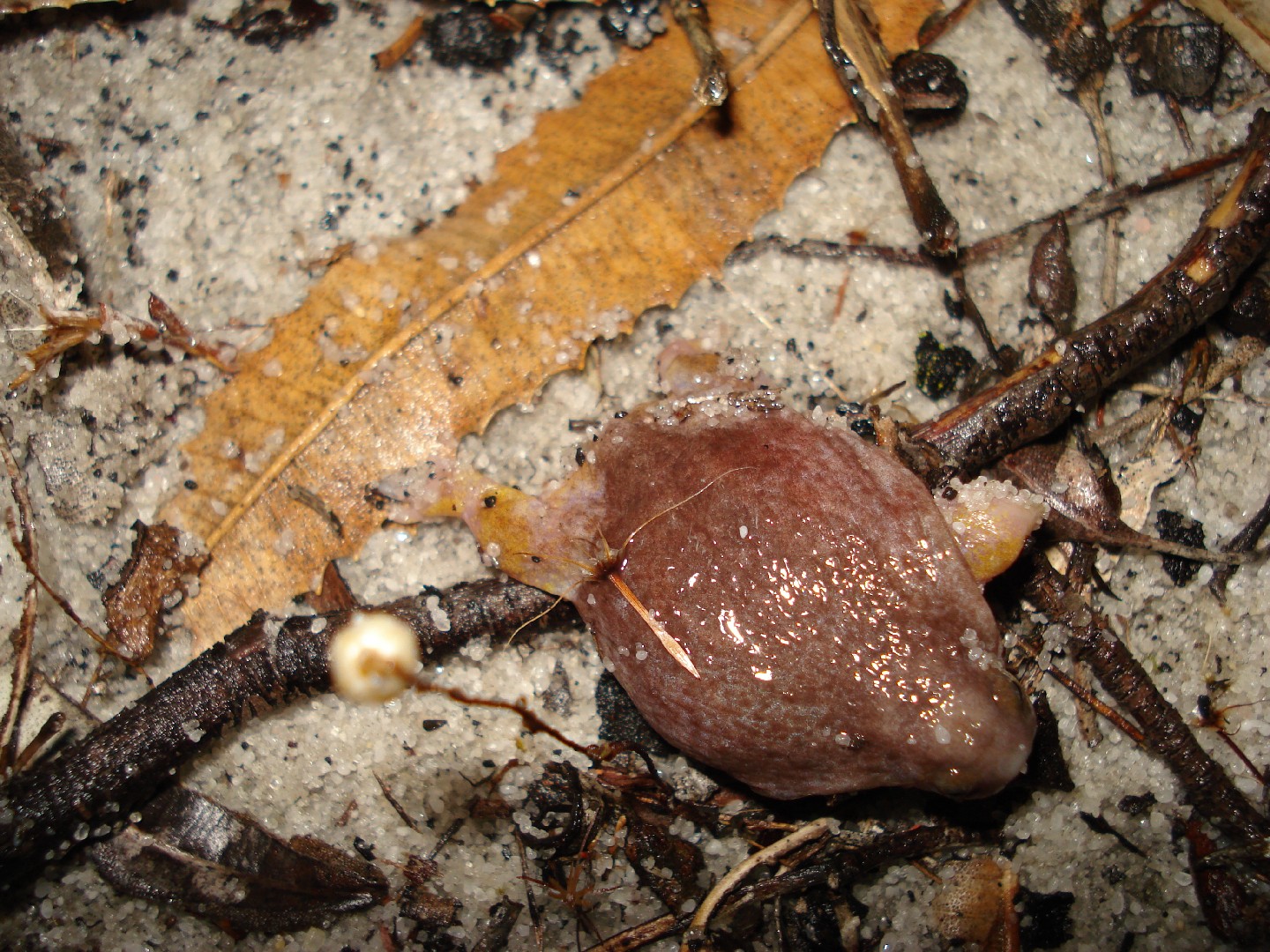Turtle frog
A species of Myobatrachus Scientific name : Myobatrachus gouldii Genus : Myobatrachus
Turtle frog, A species of Myobatrachus
Scientific name: Myobatrachus gouldii
Genus: Myobatrachus
Content
Description General Info
 Photo By Paul J. Morris , used under CC-BY-SA-2.0 /Cropped and compressed from original
Photo By Paul J. Morris , used under CC-BY-SA-2.0 /Cropped and compressed from original Description
Myobatrachus gouldii, the turtle frog, is a Western Australian frog and the only species in the genus Myobatrachus. It has a small head, short limbs, and a round body, up to 45 millimetres (1.8Â in) long.
General Info
Lifespan
10-15 years
Diet
The primary diet of turtle frog encompasses an array of termites, which it uncovers underground using its shovel-shaped head. Its nutrient-dense diet majorly includes ants, beetles, and other small ground-dwelling invertebrates.
AdultSize
medium
Appearance
Turtle frog is a small, stout ground-dwelling frog, characterized by rough, warty skin texture. It varies in color from a uniform dark brown to light grey, often with darker blotches or bands. It is further distinguished by its short limbs, head as wide as the body, and lack of external ear openings. Age or gender do not significantly alter its appearance.
Behavior
Turtle frog exhibits an unusual burrowing lifestyle. It spends most of its life underground, surfacing only for mating purposes, or during heavy rains. Turtle frog's foraging activity is also subterranean, feeding on a diet of termites and ant larvae. Solitary in nature, turtle frog has little to no observable social interaction, with territorial displays limited to vocalizations primarily during the breeding season.
Population
Stable
Scientific Classification
Phylum
Chordates Class
Amphibians Order
Frogs and toads Family
Australian ground frogs Genus
Myobatrachus Species
Turtle frog